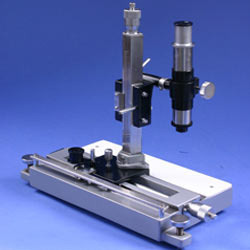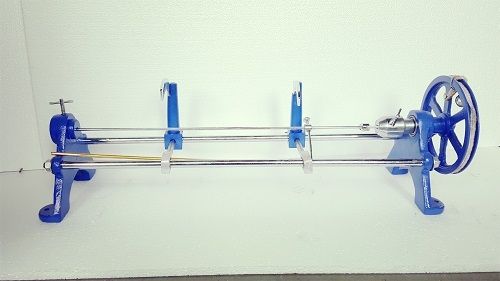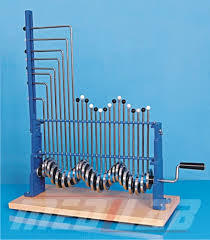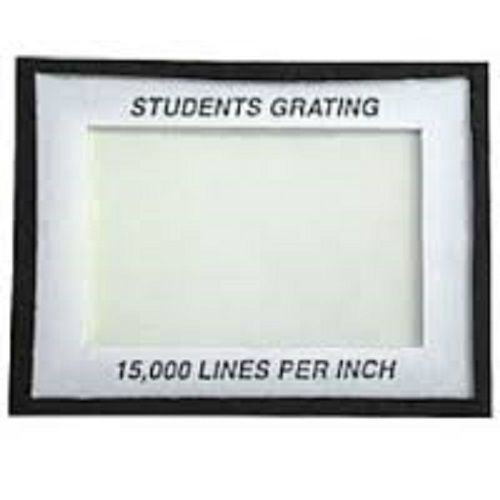Travelling Microsocpe
Price 8200 INR/ Piece
Travelling Microsocpe Specification
- Core Components
- Microscope Unit, Vernier Scale, Horizontal & Vertical Slides, Fine Screw Adjustment, Measuring Scale
- Automation Grade
- Manual
- Power Source
- Manual (No Power Required)
- Measurement Range
- Up to 200 mm (horizontal and vertical)
- Temperature Range
- Ambient Laboratory Temperature
- Capacity
- Not Applicable (Measurement Instrument)
- Model No
- Varies by Manufacturer
- Accuracy
- Up to 0.01 mm
- Feature
- Vernier Reading Accuracy, Smooth Sliding Movement, Rigid Stable Base
- Equipment Materials
- Robust Cast Iron Base, Brass Components, Stainless Steel Scale
- Type
- Mechanical Laboratory Microscope
- Usage
- Precision Measurement of Small Distances in Laboratory Experiments
- Display Type
- Analog Vernier Scale
- Dimension (L*W*H)
- Approx. 350 x 180 x 340 mm
- Weight
- Approx. 3-5 kg
Travelling Microsocpe Trade Information
- Minimum Order Quantity
- 1 , , Piece
- Main Export Market(s)
- Eastern Europe, South America, Western Europe, Africa, Central America, Australia, Middle East, Asia, North America
About Travelling Microsocpe
Travelling MicroscopeCollege Grade , Comprising 17 Cm And 15 Cm Stainless Steel Scales, Vernier Reading To 0.01 Mm , Provided With High Class Optical Combination And Superior Fittings, With Heavy Base, Nicely Finished In Metallic Grey And Black Contrast Housed In 12 Mm Thick Beautiful Storing Cabinet.
Exceptional Precision for Laboratory Measurements
Engineered for accuracy, the Travelling Microscope provides measurements as precise as 0.01 mm, ideal for determining small distances, such as the diameter of capillary tubes or displacement in optics experiments. Its analog Vernier scale and finely crafted components support detailed scientific work, making it indispensable in many laboratory settings.
Robust and Versatile Construction
Built with a rugged cast iron base and high-quality brass and stainless steel fittings, this microscope promises durability and stability. Its fully manual operation allows use in any laboratory environment without electricity, and the 360-degree rotatable tube adds flexibility for a wide range of scientific tasks.
FAQs of Travelling Microsocpe:
Q: How does the Travelling Microscope achieve precise measurements in laboratory experiments?
A: The Travelling Microscope combines a high-magnification optical system (10X objective and 15X eyepiece) with a finely graduated Vernier scale, allowing users to make readings with an accuracy of up to 0.01 mm. Its rack and pinion focusing and stable cast iron base ensure smooth, precise horizontal and vertical movements.Q: What types of measurements can be performed using this microscope?
A: This instrument is ideal for measuring small distances, such as the diameter of capillary tubes, displacement in optics experiments, and other precision tasks requiring linear measurement up to 200 mm within laboratory settings.Q: When should a Travelling Microscope be used over other measurement devices?
A: A Travelling Microscope is best employed when extremely fine measurements are required, especially where conventional rulers or calipers lack the necessary accuracy and stability, such as in scientific research or educational experiments involving minute scale analysis.Q: Where can this microscope be used, and what laboratory environments is it suitable for?
A: Its robust and manual construction makes it suitable for physics, chemistry, and engineering labs in academic institutions, research facilities, and industrial environments across India and internationally, wherever precise measurement of small distances is needed.Q: What is the process for setting up and using the Travelling Microscope?
A: Set the microscope on a stable surface, level it with the base screws, and secure your sample using the glass plate and brass stage clips. Use the rack and pinion mechanism to focus, and slide it horizontally or vertically to align with the measurement points. Read the distance on the analog Vernier scale for high accuracy.Q: What benefits does the 360-degree rotatable telescope provide in experiments?
A: The 360-degree rotation allows users to orient the optical tube as needed, granting maximum flexibility when observing and measuring samples from different angles without repositioning the whole instrument.

Price:
- 50
- 100
- 200
- 250
- 500
- 1000+
More Products in Physics Lab Instruments Category
Trinocular Microscope
Price 6700 INR / Piece
Minimum Order Quantity : 1 Piece
Dimension (L*W*H) : 14*12*10 Centimeter (cm)
Usage : For Laboratory
Weight : 2200 Kilograms (kg)
Equipment Materials : Iron & Bakelite
Torsion pendulum horizontal
Price 4000 INR / Piece
Minimum Order Quantity : 1 Piece
Dimension (L*W*H) : Approx. 50 cm x 20 cm x 30 cm
Usage : Physics experiments to determine modulus of rigidity, study oscillatory motion and torsional vibration
Weight : Approx. 2 4 kg
Equipment Materials : Polished metal rod, metal disc, sturdy metal frame
Wave Motion Apparatus
Price 3100 INR / Piece
Minimum Order Quantity : 1 Piece
Dimension (L*W*H) : Approx 80 x 15 x 20 cm
Usage : Laboratory demonstration of wave motion principles
Weight : Approx 45 kg
Equipment Materials : Mild steel frame, stainless steel rods, metallic base, powdercoated finish
DIFFRACTION GRATING
Price 400.00 INR / Piece
Minimum Order Quantity : 1 Piece
Dimension (L*W*H) : 3*2*2 Inch (in)
Usage : IN LABORATORY
Weight : 100 Grams (g)
Equipment Materials : GLASS
 |
ESEL INTERNATIONAL
All Rights Reserved.(Terms of Use) Developed and Managed by Infocom Network Private Limited. |

 Send Inquiry
Send Inquiry




